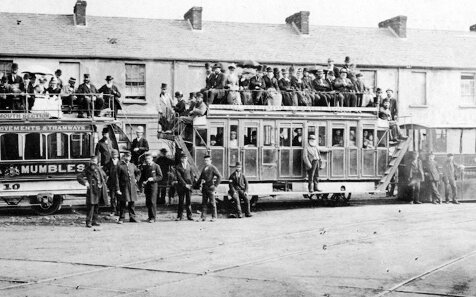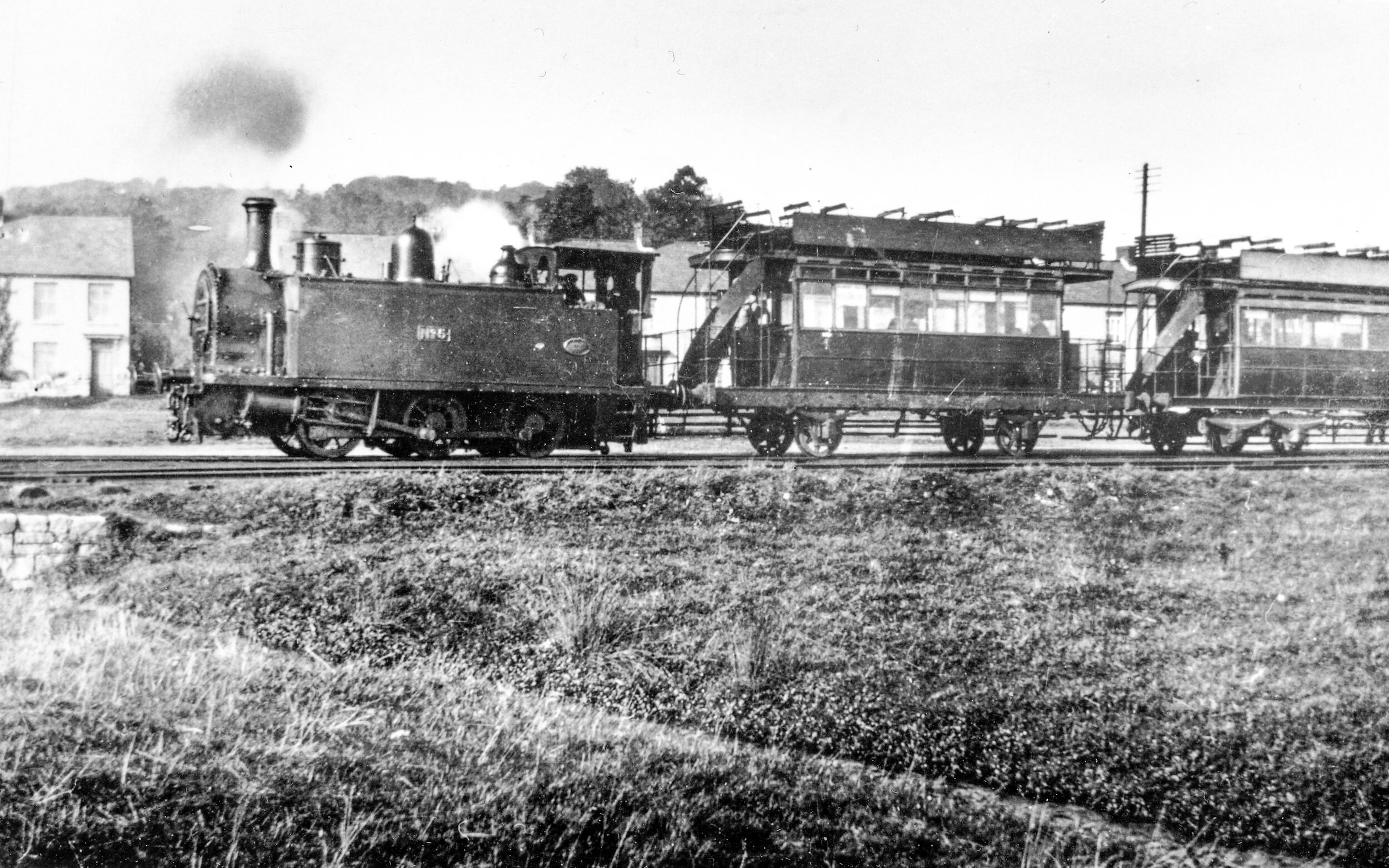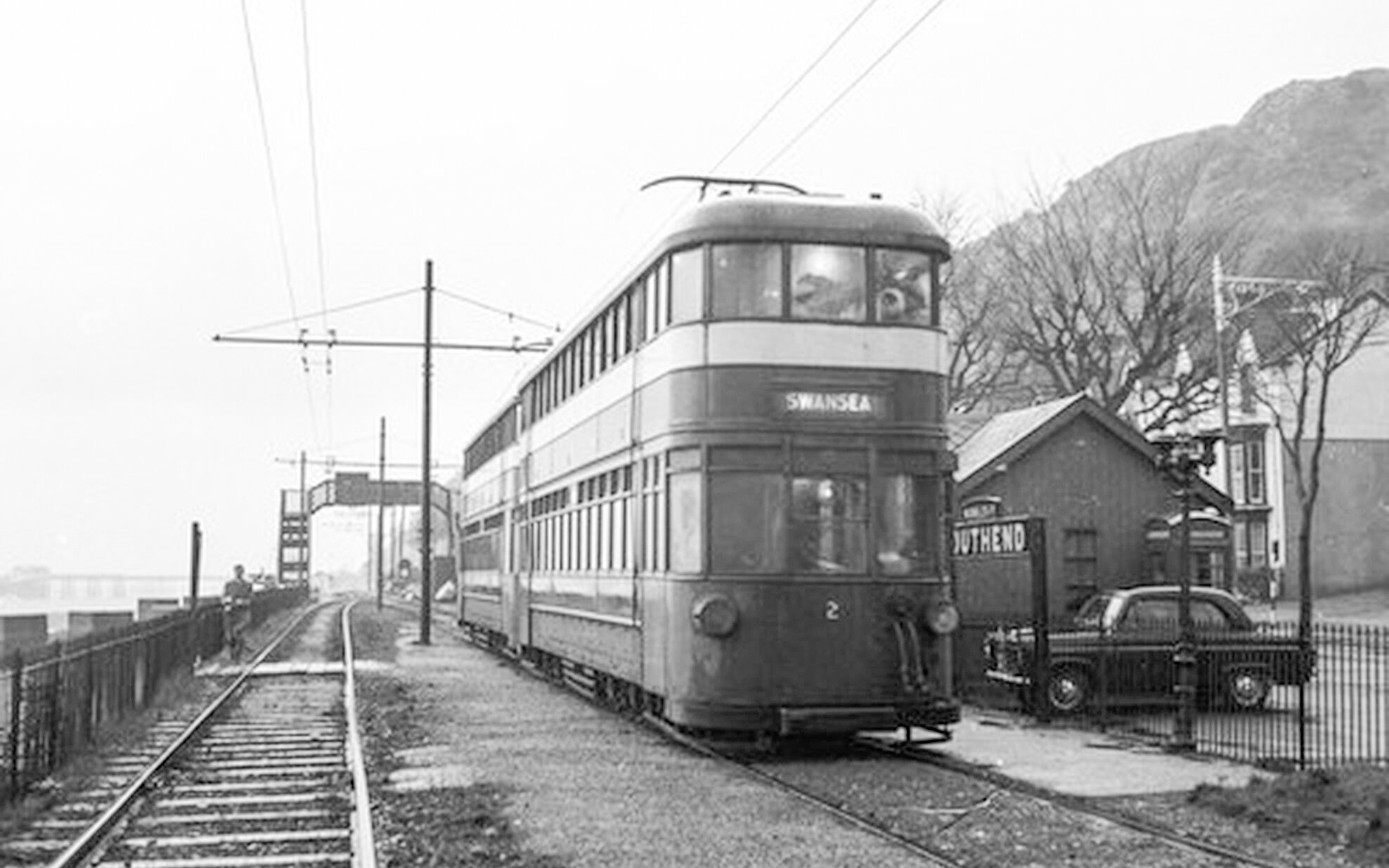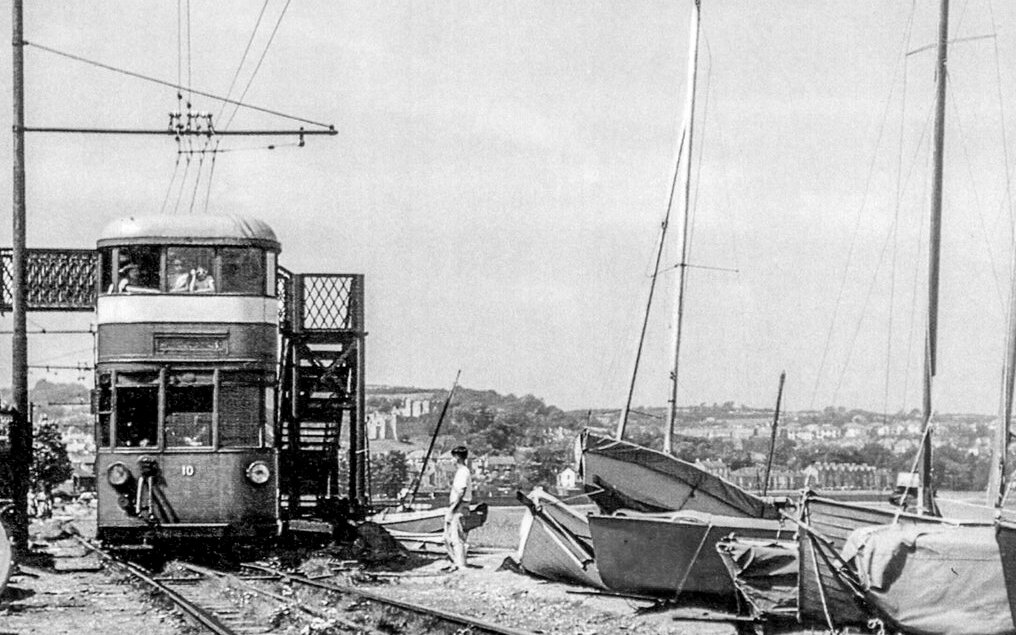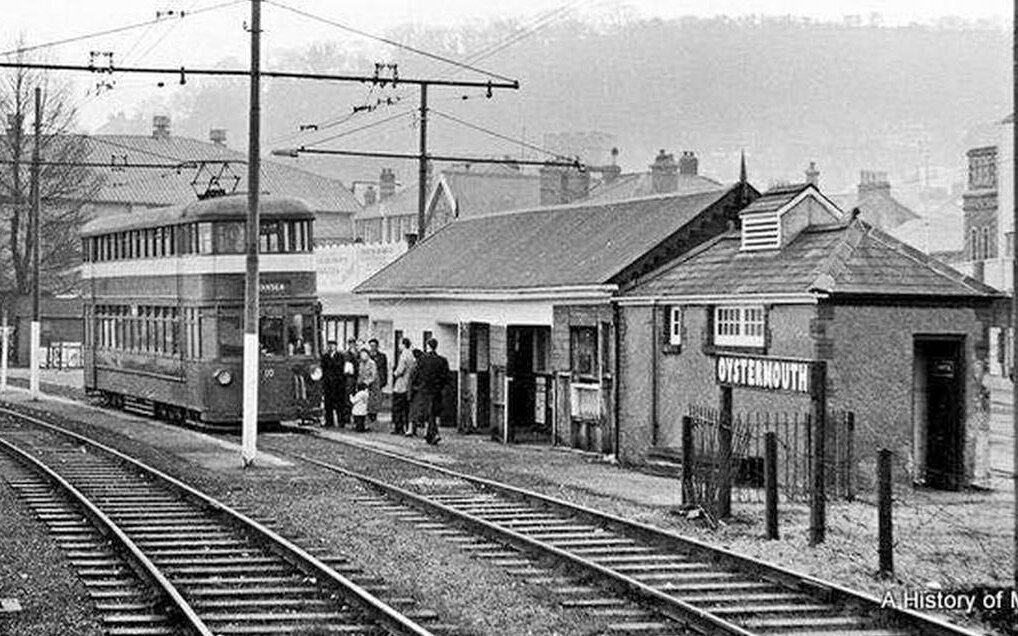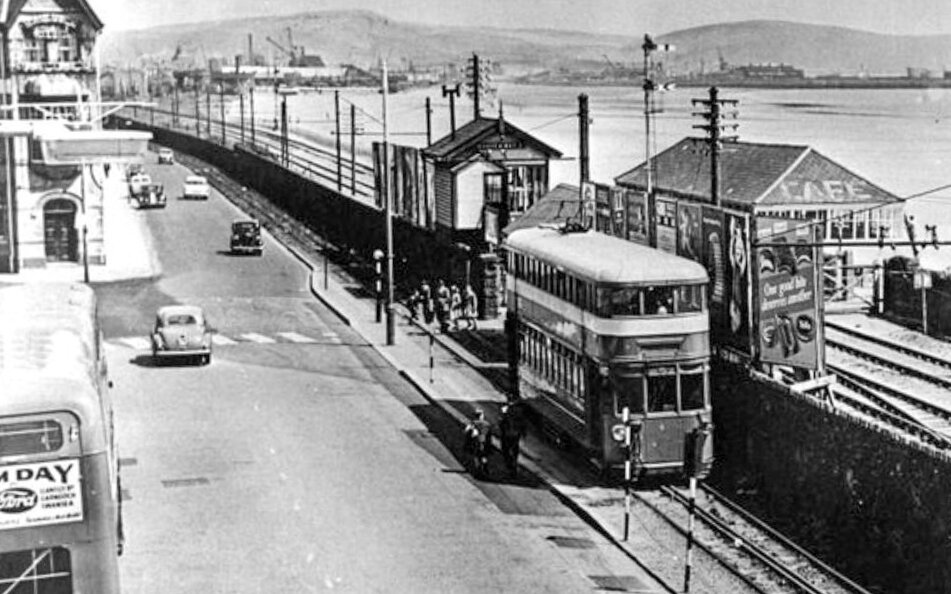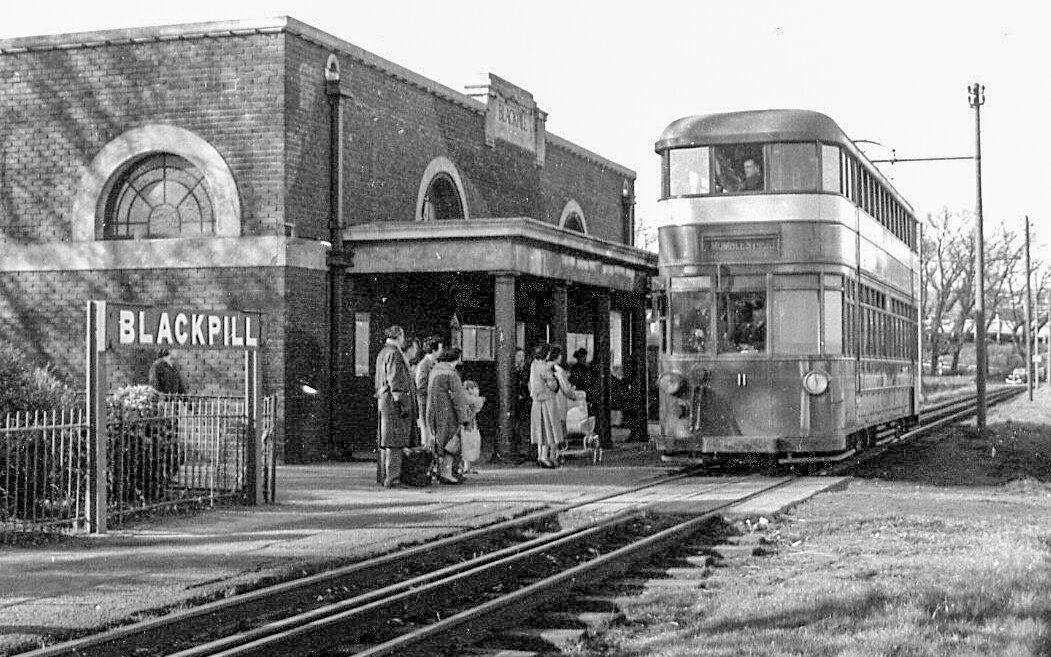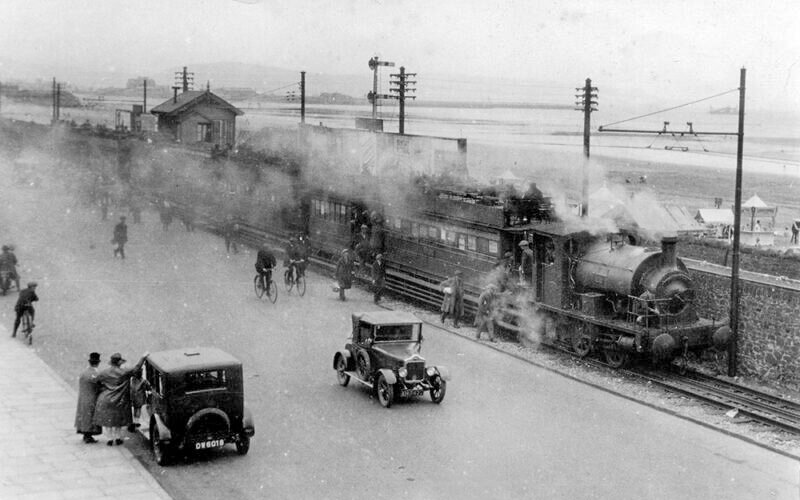The Mumbles Train
The world's first fare-paying train passenger service.
First established in 1804, the Mumbles Train transported iron ore from Clyne Valley and limestone produced in Mumbles. Just a few years late, on March 25, 1807, Benjamin French came up with the idea of transporting people making the Mumbles train the world's first fare-paying (Horse Drawn) passenger railway, 20 years before the Stockton and Darlington service, which claims the distinction of being the world's first Steam passenger railway. The first fare-paying customers paid two shillings for a journey in a horse-drawn twelve-seater carriage.
The sea-side track between Blackpill and West Cross was swept away by a storm in 1815 and had to be re-laid further inland. By 1823, a horse-drawn car carrying 16 passengers ran twice a day from Swansea to Oystermouth; the fee was now one shilling. The Company extended the railway over the courtyard of Dunns Mansion in 1813.
A turnpike road was built between Swansea and Oystermouth in 1826, running alongside the rail track. Because of this action, as well as the fall in cargo transportation, the railway struggled and found it impossible to compete financially. It was virtually abandoned for nearly thirty years, only carrying a tiny amount of cargo on occasion.
The Mumbles Tram by Brian Davies
Part of the line between the Strand (Swansea) and the collieries in Clyne Valley was re-laid in 1855. In the 1860s, Mail was transported to and from Swansea to the Post Office at Southend (Carlton Hotel). By 1869, there were ten trains running in each direction on weekdays, eleven on Saturdays, and five on Sundays. A single carriage or more required one or two horses to pull!. Rutland Street, Waterworks Road, Sketty Road, Blackpill Road, Bishopston Road, Lilliput Road, West Cross Road, Norton Road, and Oystermouth were all stops on the train.
A regular steam service began in August 1877. Henry Hughes' engine, The Pioneer was attached to two large cars that could carry over 80 passengers. To supply construction material for the Pier, the Mumbles Railway and Pier Company extended the track from Oystermouth to Mumbles Head in 1889. The Pier grew in popularity as steamers such as the 'Brighton' called to take visitors across to Ilfracombe.
The track from Oystermouth to Southend was completed in May 1893. Mr James Orrin, the Postmaster of Southend Post Office at the time, was involved in a terrible accident in September of that year. He fell into the water tank that was located between the rails while walking home at dusk; this was the repository of the hot water from the engines. He was severely burned and died a few days later, despite medical attention.
Stations were established at Oystermouth, Southend, and the Pier during the Edwardian era. The railway carried 48,000 passengers on August Bank Holiday Monday, 1913! The six-mile journey took an hour at an average speed of 7 mph, and passengers sitting outside on the top were surrounded by smoke and cinders, and were covered in smuts thrown up by the steam engine.
The final steam train service ended on March 1, 1929. It was replaced by an electrified service that started with a fleet of thirteen double-decker cars, each seating 106 passengers (48 on the lower deck and 58 on the upper deck). With a maximum capacity of 212 passengers, a train could pull one or two of these coaches. The blue leather seating's backs could be adjusted to face the direction of travel. Initially painted cream and brown to match the town's trams, the coaches eventually became the well-known red. In the absence of delays, the travel time was reduced to nineteen minutes.
An overhead trolley wire carried 6,600 volts alternating current from the Corporation's generating station to the sub-station at Blackpill, where it was converted to 650 volts direct current and supplied to the line's various feeding points. According to the pre-war summer schedule, there were sixty journeys each way on weekdays and forty on Sundays. In 1938, there were 1,192,922 passengers.
Passenger numbers reached unprecedented highs in 1945, totalling no less than 4,995,000. The Mumbles Railway contributed to public morale by providing comfort to many citizens who came to appreciate its dependable service and share in a kind of passenger camaraderie that existed throughout those anxious years. Many children of the time rode the train to school, with the fare from West Cross to Oystermouth Square being one old penny.
The railway was shut down in stages. On 11 October 1959, the section from Southend to the Pier was closed to allow for the construction of a special road to the Pier for the buses that would replace the trains. The last train (a ceremonial special carrying local dignitaries) left Swansea for Mumbles at 11.52 a.m. on Tuesday, 5 January 1960, driven by Frank Dunkin, who had worked on the railway since 1907. Work on dismantling the track and cars began almost immediately after the train returned to the Rutland Street depot.
Credits & References:
A History of Mumbles: https://sites.google.com/site/ahistoryofmumbles/home
Peter Williams: https://youtu.be/xV6AUkhjilw
Ace Movie Co: https://www.youtube.com/watch?v=FU9Cq-v9dvA&t=3s



